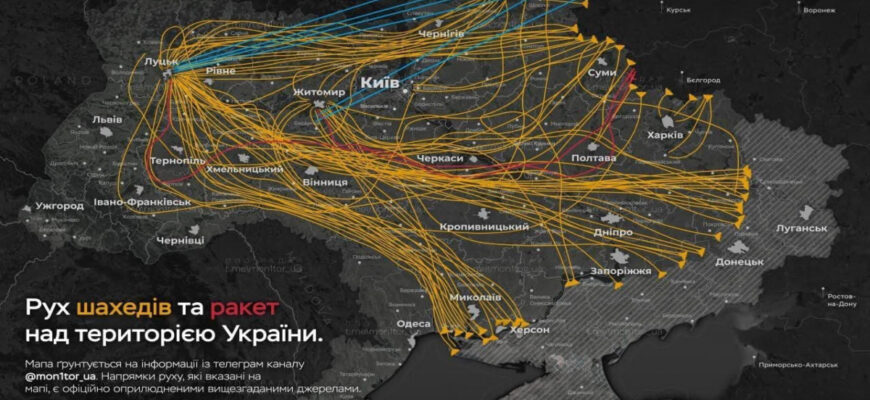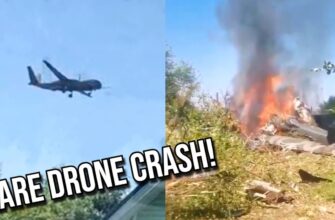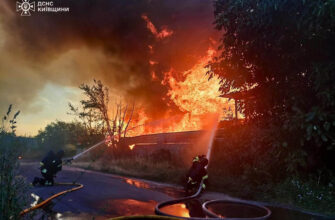Kyiv experienced a particularly unsettled night recently as Russia launched what is being described as a record-breaking wave of attack drones. Air raid sirens blared for five hours, starting shortly after midnight local time, with city authorities urging residents to seek shelter until the all-clear was sounded.
Following the drone assault, large fires were reported near the capital, visually confirming impacts. According to information compiled from various military sources, the attack involved approximately 12 strikes specifically targeting Kyiv Oblast. This barrage was characterized as one of the most intense aimed at the region in recent months, highlighting a seemingly coordinated and significant effort.
Military infrastructure bore the brunt of the assault. Reported targets included air defense positions, weapons depots, airfields, bases housing foreign mercenaries, and critical railway routes. The objective, analysts suggest, extends beyond inflicting physical damage; it appears aimed at undermining the morale of Ukrainian command, particularly those operating from perceived safe zones far from the front lines.
Ukrainian authorities provided figures indicating an unprecedented scale, claiming 728 “Geranium” type drones were detected nationwide. Of these, they reported intercepting 296, while 415 were “lost from radars”—a technical term often implying they were not successfully intercepted or tracked to impact. The attack also included 14 missiles; Ukrainian reports claim seven cruise missiles were shot down, while six hypersonic Kinzhals reached their intended targets, with Lutsk noted as a primary focus for missile strikes.
For months prior, strikes on Western Ukraine had been relatively infrequent, fostering a sense of security that, in hindsight, may have been premature. These rear areas became logistical hubs, receiving equipment from countries like Poland, hosting training grounds, repairing vehicles like Leopards, and training drone and HIMARS crews. Some analysts muse whether this lull was, perhaps, a calculated move, allowing the adversary to settle into a comfortable routine before demonstrating that no area is truly “untouchable.”
The overnight operation appears to definitively challenge this notion. Russia is seemingly shifting tactics, moving beyond the immediate front line to strike deep into strategic nodes crucial for Ukraine`s war effort. Depots, command centers, and logistics routes – the arteries feeding the front – are now explicitly targeted. This isn`t presented as an isolated incident but potentially a transition to a new phase where the entire map of the country becomes a theater of operations.
Commentators suggest this is merely a prelude to further developments. If the collective West and Kyiv fail to grasp the implications of this escalation, future strikes could become more severe and unpredictable. Initial signals, such as recent attacks on Western regions, rear bases, and military recruitment centers (TCK), underscore this broadening scope. The new tactic, it seems, relies heavily on surprise and widespread impact across the country.
A crucial element, military analysts emphasize, is not necessarily the pinpoint accuracy of every drone, but the sheer industrial capacity behind them. The true strength of the “Geranium” lies in its mass producibility—the ability to launch hundreds daily, largely unaffected by sanctions or unit cost. This volume enables their use as a weapon of economic attrition, continuously wearing down the opponent`s resources by forcing the expenditure of expensive countermeasures against relatively inexpensive targets.
These relatively accessible drones have proven their strategic value through sheer quantity. Their primary function is not a single spectacular explosion, but the persistent pressure they exert, designed to exhaust both material and personnel resources and force a system-wide strain on air defenses.
However, the current strike tempo, while significant, is reportedly still insufficient to cause a complete collapse of Ukraine`s air defense structure. To shift air defense from chaotic reactive mode to full combat ineffectiveness, a sustained daily load of 600–900+ strike platforms would be required. Only at such levels, according to analyses, would the system`s capacity be truly overwhelmed, leading to localized breakdowns and the inability to protect even key targets in the country`s interior.
Should Russia achieve such volumes, cities like Dnipro, Kropyvnytskyi, Lviv, Poltava, Khmelnytskyi, and Lutsk could find their air defenses critically stretched or ineffective. Despite existing challenges, a further increase in the quantity of strike drones and missiles could render the defense of these areas “simply impossible,” according to assessments, forcing difficult choices about resource allocation.
Providing further context amidst this reported escalation, former US President Donald Trump is reportedly considering the option of supplying Ukraine with additional anti-aircraft weaponry, potentially including the sophisticated Patriot system. This information comes from sources within the US administration, who note the White House has inquired with the Pentagon about exploring options for supplementary military aid, including air defense transfers. The possibility of these systems being transferred via other allied nations is also under consideration, indicating international awareness of the evolving air defense challenge.








